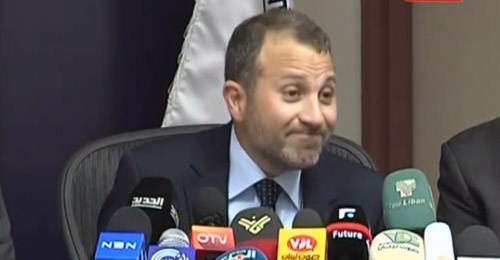By Randa Slim
Senior Fellow and Director of Conflict Resolution and Track II Dialogues Program
Lebanese expatriates cast their votes in 59 countries this past week. According to information reported by the Lebanese Ministry of Foreign Affairs, turnout reached close to 60% of registered voters, three times the expatriate turnout in the 2018 elections. The expatriates’ ballots will be shipped by DHL to Lebanon and kept in storage at the Central Bank until May 15, when voters in Lebanon cast their votes. Concerns have already been raised about the transparency of the process and how the ballots will be gathered, shipped, and stored until election day, when they will be opened and distributed to the voters’ electoral districts for tabulating.

Will higher expatriate turnout be a harbinger of what to expect on May 15, when residents cast their ballots? In 2018, voter turnout was 49.7%. Public opinion polls have been contradictory. Some show a higher level of enthusiasm among voters while others indicate disillusionment and apathy, which will likely lead to lower turnout. It is also not clear whether higher voter turnout will benefit the independent candidates and civil society activists who rose to prominence in the October 2019 protests or reaffirm the hold that traditional parties have so far maintained over the Lebanese electorate.
In addition to voter turnout levels on May 15, there are four key dynamics to track as the results are announced:
Will higher expatriate turnout be a harbinger of what to expect on May 15, when residents cast their ballots? In 2018, voter turnout was 49.7%. Public opinion polls have been contradictory. Some show a higher level of enthusiasm among voters while others indicate disillusionment and apathy, which will likely lead to lower turnout. It is also not clear whether higher voter turnout will benefit the independent candidates and civil society activists who rose to prominence in the October 2019 protests or reaffirm the hold that traditional parties have so far maintained over the Lebanese electorate.
In addition to voter turnout levels on May 15, there are four key dynamics to track as the results are announced:

How large is the Free Patriotic Movement’s (FPM) loss in Christian districts and which other Christian parties and candidates will it benefit? Public opinion polls indicate that of the ruling political parties contesting these elections, FPM will likely lose the most seats. Which other parties will secure the largest share of the disenchanted vote? Will it go toward other traditional Christian parties, including the Lebanese Forces and the Phalanges, or will it benefit independent Christian candidates?
How large is the Sunni boycott? According to some public opinion polls, close to 30% of Sunni voters are planning to boycott the elections. With Saad Hariri’s exit from the political scene, choosing to boycott the elections is either about showing loyalty to Hariri or a reflection of broader disillusionment among Sunni voters with their political leaders, whom they blame for the economic crisis and their failure to rein in Hezbollah. A large Sunni boycott will likely translate into additional seats in parliament for Hezbollah and their allies.
Will Hezbollah and Amal maintain their hold on Shi’a voters or will we see a win by one or two independent Shi’a candidates ?

How many independent candidates will win overall? In 2018, only one independent won. A win by 10-12 independents this time will be considered a major achievement given the many obstacles they face, including threats and attacks by supporters of the ruling elites, the well-oiled political machines of the traditional parties, and their own internal divisions, which led to their fielding several competing lists instead of presenting a unified front to Lebanese voters. They are hoping that public anger against the political status quo will be sufficient enough to overcome these obstacles and help them secure this electoral feat.
MEI. Edu

Leave a Reply
You must be logged in to post a comment.